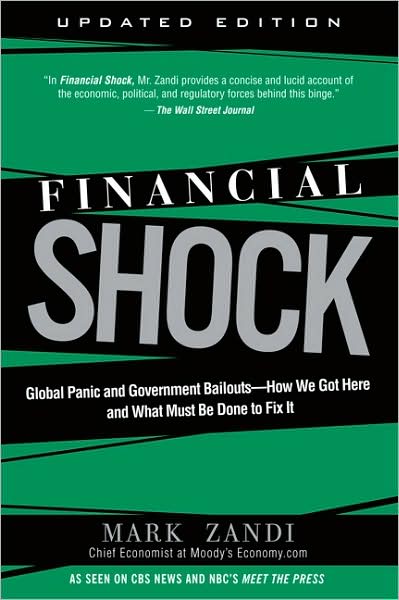Fifteen Notes on our Current Economic Situation
1) I don’t think that residential real estate prices are turning in general.? But even if residential housing recovers, and demand returns, there will be a “housing mismatch.”? There will be too many high end homes relative to buyers.? Financing for high end homes is sparse, and too many expensive homes were built during the boom years.
2) Inflation.? What a debate.? In the short-run, deflationary pressures are favored, but what can you expect when so many dollar claims are being created by the Fed?? The output gap may indicate inflation is impossible, but stagflation is possible when monetary policy exceeds the need for dollar claims amid a collapsing economy, as in the 70s.
3) At the time, I suggested that the banks forced to take TARP funds had been coerced because the regulations could be lightly or tightly enforced.? Looks like that was true.? Why does this matter?? The TARP was supposed to be stigma-free because all major banks were taking it.? Coercion should make the government more lenient on payback terms.
4) I never did all that much with the cramdown that the Obama administration did with Chrysler secured creditors.? All that said:
- George Will wrote a good piece on the ethics of the situation.
- Subordination of secured claims does happen, but not typically with such loans as brought Chrysler out of Daimler.
- One of the main parties fighting the case is not a “bunch of speculators,” but the Indiana State Pension funds.? I think they will win their case.
5) Can global trade patterns be changed to avoid the dollar?? Some are trying.? In the long run, if the US is only a capital importer, the US Dollar will lose its reserve status, and weaken considerably.
6) Union jobs are magic.? They provide these incredible benefits, but with one small problem: they kill the companies that are forced into them.? GM may be sold to the government, but unless the burden of total compensation being above productivity is lifted, there will be no substantive change.
7) Dilution.? I was never a fan of McClatchy, but this seals the story on the newspapers.? Sell equity interests cheaply, so that you can survive.? The same is happening with many banks, and it is forcing the share prices of the industry lower.
8 ) Commercial real esate is the final shoe to drop in our credit bust.? Prices are 20% below the peak.? Refinancing will prove tough.? There are no sectors in commercial real estate that are not overbuilt.
9) The PBGC is taking its share? of losses at present.? This is no surprise here, given all I wrote about the PBGC at RealMoney.? The losses on a market value basis are even greater, because firms with underfunded pensions are more likely to default.
10) Residential real estate has not stabilized yet.? The bottom will come after the resets on Alt-A lending.
11) Are there difficulties with lending in the farm belt?? To a greater degree than I expected, yes.
12) Will California survive?? We can only hope.? Given that there is no bankruptcy code for states, California could prompt a Constitutional crisis if it defaults.
13) Should the Fed regulate systemic risk?? Perhaps when it stops creating it.? My position was, and continues to be that the Fed has been incompetent with monetary policy, bringing us to where we are today.? We need to eliminate the Fed and its bureaucracy, which produces little value for the US.? Monetary policy could be conducted with a far smaller staff; it might even be better.? Remember, bureaucries hit economies of scale rather rapidly.? Small is beautiful with bureaucracies.
14) In the recent slowdown, there has been inventory decumulation.? Those at the end of the supply chain have been hit the hardest.? Welcome to the cyclical world when it has to slow down.? The tail always gets it the worst in a game of “crack-the-whip.”
15) Ending with inflation, John Hussmann makes the case that the current economic policy must result in inflation.? If you are reading this, John, given that we live in the same city, perhaps we could have lunch someday?








